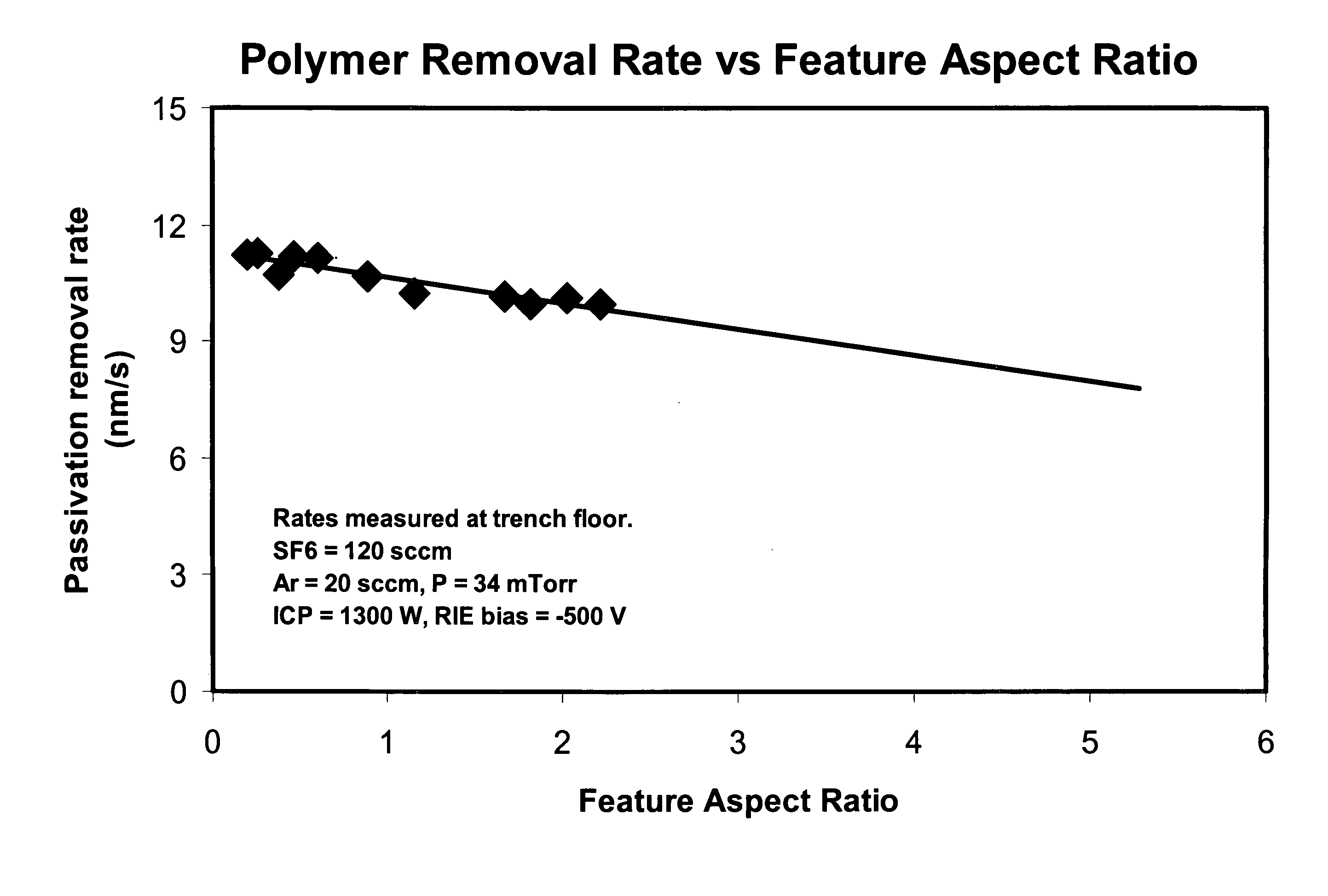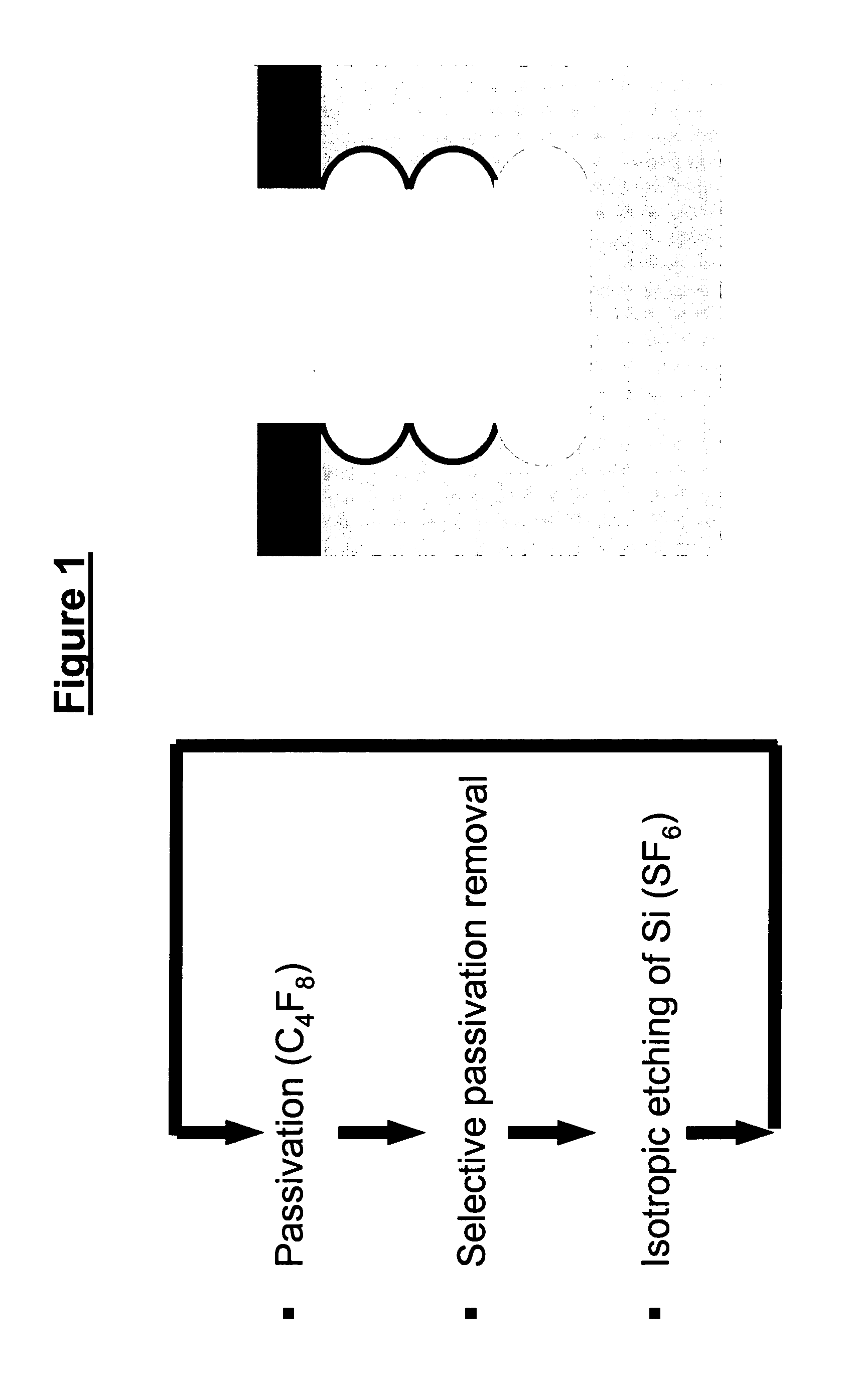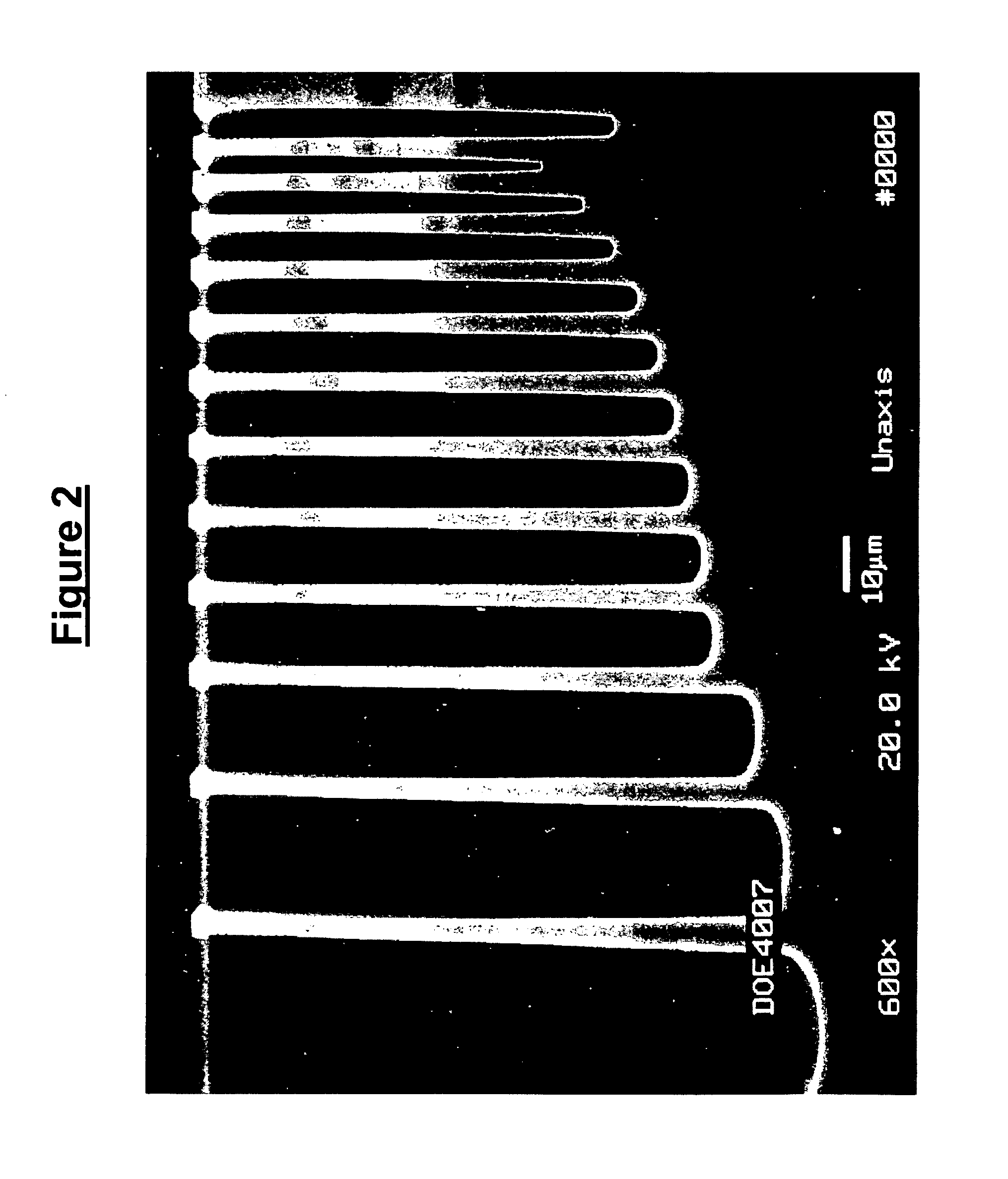Method and apparatus for reducing aspect ratio dependent etching in time division multiplexed etch processes
a technology of multiplexing etching and aspect ratio, which is applied in the direction of fluid pressure measurement, semiconductor/solid-state device testing/measurement, instruments, etc., can solve the problems of incompatibility with device design requirements, difficulty in arde effect, and etching rate drop over time, so as to reduce arde and reduce aspect ratio dependent etching
- Summary
- Abstract
- Description
- Claims
- Application Information
AI Technical Summary
Benefits of technology
Problems solved by technology
Method used
Image
Examples
Embodiment Construction
[0055] We disclose an improved method and apparatus for reducing, or eliminating, RIE lag (ARDE) in TDM etch processes by adjusting the polymer deposition, the removal of the polymer and / or the etching of the material from the substrate.
[0056] We also disclose the use of a real time metrology device, differential interferometer, for generating a signal indicative of a difference in depth between at least two different size features to reduce, or eliminate, RIE lag (ARDE) in TDM etch processes.
RIE Lag Reduction Examples
[0057] As made apparent in FIG. 1, one needs to start with the three fundamental physical processes (polymer deposition, polymer removal and isotropic silicon etching) in order to reduce or eliminate RIE lag. The etch and deposition characteristics of all three sub-processes are feature size (aspect ratio) dependent. The feature size dependency however is different for each of the three sub-processes.
[0058] In a typical TDM silicon etch process, the polymer deposi...
PUM
| Property | Measurement | Unit |
|---|---|---|
| size | aaaaa | aaaaa |
| widths | aaaaa | aaaaa |
| depth | aaaaa | aaaaa |
Abstract
Description
Claims
Application Information
 Login to View More
Login to View More - R&D
- Intellectual Property
- Life Sciences
- Materials
- Tech Scout
- Unparalleled Data Quality
- Higher Quality Content
- 60% Fewer Hallucinations
Browse by: Latest US Patents, China's latest patents, Technical Efficacy Thesaurus, Application Domain, Technology Topic, Popular Technical Reports.
© 2025 PatSnap. All rights reserved.Legal|Privacy policy|Modern Slavery Act Transparency Statement|Sitemap|About US| Contact US: help@patsnap.com



